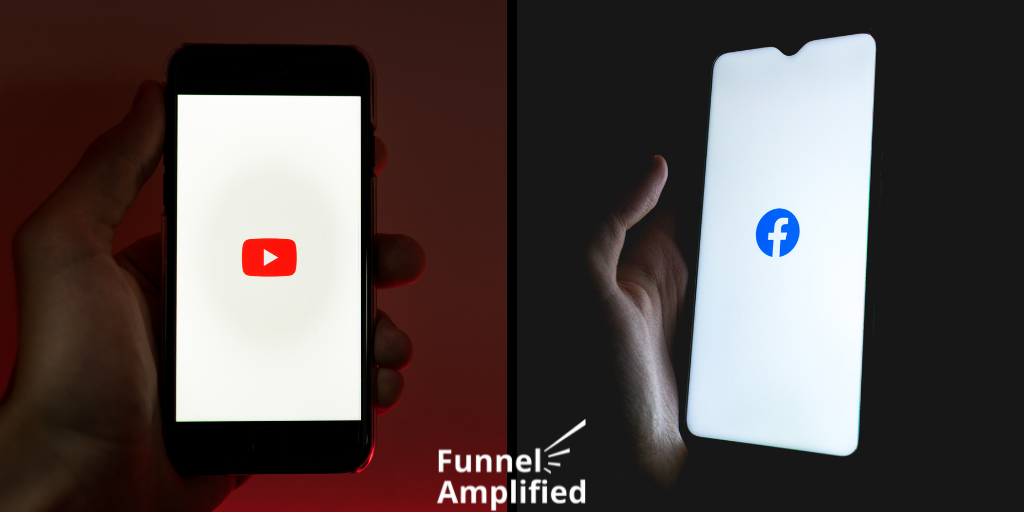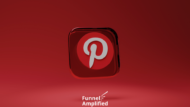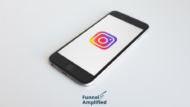In just over two decades, online video sharing and social media platform websites have dominated the business and advertising world. There are two names most recognizable amongst the digital powerhouses: Facebook and YouTube.
The Battle Between Facebook And YouTube
Both harness sheer volumes in clicks to deliver the most diverse advertising audiences in the digital age, completely upending the business landscape’s marketing strategy structure. The platforms are an essential pitstop in appeasing consumer wants. Of the top five social networks, Facebook and Youtube take the top two spots, with a combined six billion participants from the global online community.
And, yes, while Facebook did change their name to Meta, we will be using Facebook as that is what most seem to still call the social media giant,
Of course, accessing both Facebook and YouTube is free of charge — the standard entry to media websites. That doesn’t mean these tech giants aren’t the most profitable (or powerful) in the world:
Similar Origins
Both Facebook and YouTube were created in the mid-2000s, riding the first post-Myspace wave of social networking that pioneered innovation.
Facebook was originally conceived in a college dorm room in 2003 by a group of Harvard students. The next year, 250,000 students signed up and garnered ads from MasterCard as an initial investor. After co-founders Mark Zuckerberg and Eduardo Saverin deposited $15k themselves, they raised their first funding round from Peter Thiel for $500k in 2004. It took three years before the social network opened to the general public; consumer engagement to anyone over 13 brought incentives to marketers who could pay for their promotional efforts. In 2012, Facebook became the largest IPO to date, surpassing Google. By the end of the first day of Facebook stock trading, Zuckerberg’s holdings were ten times that of the search-engine giant.
In contrast, YouTube was viewed as a surefire hit from the start. The venture capital start-up raised over $25 million in their few months of fundraising, completely unheard of for a digital acquisition at the time, before launching a beta version in May of 2005. To bring about further buzz, Time magazine featured the site as their “Person Of The Year”. A Nike ad featuring Ronaldo accumulated over one million views, the first time a digital media piece had surpassed the six-figure marker. By 2007, YouTube was able to incorporate more bandwidth than the entire internet utilized months prior. Seven years later, over 300 hours of user-generated content was uploaded to the site every minute.
High Profile Acquisition
Facebook went the merger and monopoly route, ultimately forming the company Meta Platforms. To keep relevant against burgeoning competitors (TikTok, Snapchat, etc), the website purchased Instagram (2012 for $1 billion), WhatsApp (2014 for $16 billion), and Oculus (2014 for $2 billion). Because of their reach, Facebook now controls a quarter of all online advertising across the globe.
YouTube was fast to sell. Only two years after their launch, Google purchased YouTube for $1.65 billion in 2006. The site shifted focus toward user-generated content and creator empowerment — a philosophy they still incorporate today. Collaborations between corporate sponsors skyrocketed, including teaming with established media corporations to create and expand their own channels, resulting in unprecedented social impact.
Monetization
 Though both are free to use, the companies still discovered a way to turn a profit for their digital business strategy.
Though both are free to use, the companies still discovered a way to turn a profit for their digital business strategy.
Advertisement represents 98% of Facebook’s revenue. Most are pay-per-click, meaning advertisers face the website each time people click an ad. According to Facebook, 160 million businesses use their platform globally, using a complex algorithm that includes interests, age, behavior, occupation, marital status, and so much more.
Youtube embeds targeted advertising directly into their video clips. The captive audience must watch anything on their screen prior to their selection. Otherwise, these spots can be toggled off if users pay a monthly fee for YouTube Premium, bundling seamless viewing with YouTube Music. The function ‘Channels’ became a reliable place for businesses to store video content and promote their product. Incentivized content creators can generate profit for their video views by monetizing their videos with ads. In 2020, a dozen users earned over $15 million on the site.
Total Numbers
Facebook reported an annual revenue of $85.9 billion last year, including five billion total app downloads. From that tally, $40.5 billion was generated in North America, despite only a 10% fraction of total users based stateside. Over the last decade, the company increased revenue by 229%.
YouTube reported an annual revenue of $19.7 billion last year, including 10 billion total app downloads. From that tally, $6.87 was generated in North America, despite only an 11% fraction of total users based stateside.
Over the last decade, the company increased revenue by 246%. Last year hosted 2.3 billion users, with 65k channels hitting over the 250k subscriber mark.
For both sites, India is the largest user base in terms of audience size and advertising audience, nearly double that of the USA.
Favorability
An issue that dogs Facebook is dwindling approval rating. In an era dictated by misinformation, the social network is facing more scrutiny than its turbulent early days.
According to The Infinite Dial, survey respondents claiming that Facebook was their favorite social network plummeted to 32% last year, down 25% from five years prior. The average American spends 38 minutes per day on the website.
YouTube benefits from having the youngest age group having accessibility to their services. Over 80% of parents claim their children zone out to the streaming videos, with 3/4 of adults in the US claiming viewership. By far, YouTube is the best video site and most popular platform in the world, generating more total viewership than FaceBook and TikTok combined.
Facebook And Youtube For Marketing
Facebook and Youtube feed off of the marketing budgets of businesses. Their business models rely on businesses. From mom and pop shops and solopreneurs to Fortune 500 companies, both digital advertising platform giants need your money to feed their machines. With Facebook taking in more than 2.2 billion in ad spend last year and Youtube taking in more than 28 billion in ad spend, the business model, from a revenue standpoint, is working.
Youtube and Facebook both offer decent advertising platforms for almost all businesses. With Facebook, your cost to reach a target customer will be much less and you can be more specific with your targeting. But, with Youtube, when you reach a target prospect, you’ll have more of their attention, as Facebook is often more fly-by, short attention span views. And, with both social networks, you can reach out directly to content creators to sponsor a portion of their content and get promoted directly in their content. This is prevalent on Youtube, where content creators generally make significantly more from sponsorships than from revenue shared directly from Youtube.
Facebook is the best option to spend digital ad spend for most companies, especially small businesses. However, for larger companies, companies seeking to grow aggressively, or companies looking to digitally prospect through social media, creating an ad budget for both social giants is highly recommended.
Youtube And Facebook For Sales
You need to be where your prospects are spending their time. Cold Calling use to be effective because you knew your prospects were sitting in their office with a phone right in front of them. These days, it is a cell phone and social media that is sitting in front of your prospects. And, they’re spending a lot of that time scrolling through Facebook and Instagram and watching Youtube videos.
LinkedIn is the platform of choice for those in sales, and rightfully so. It is certainly the best, or at least most straightforward, social network to identify and target business professionals. But, your target prospects are spending more time on Facebook and Youtube. Therefore, you need to be there too.
Here is the bottom line: Salespeople that utilize social media, develop a presence, and have a social prospecting cadence strategy, will have more prospects, develop more relationships. and close more sales. Youtube and Facebook have created these massive and powerful social networks. Put them to work for you. Use the power of digital media, social media marketing, and digital prospecting to grow your sales.

Thanks for reading. I typically write about modern selling, virtual selling, prospecting, sales reps reputation and how content helps all of these with modern buyers. My primary audience includes CEOs, CROs, CMOs, and other executives responsible for increasing bottom line. Post your questions in the comments section below and let’s discuss this!








